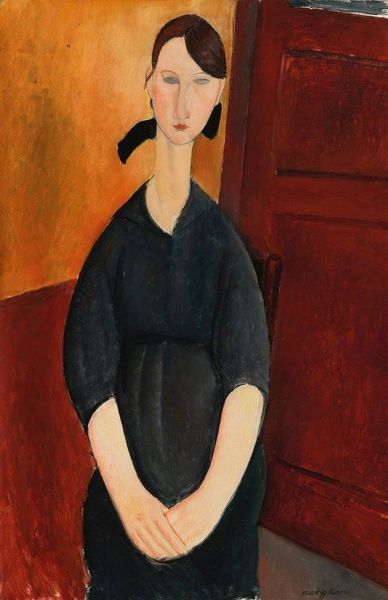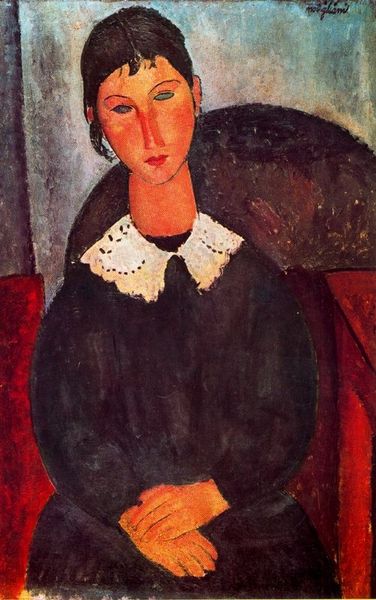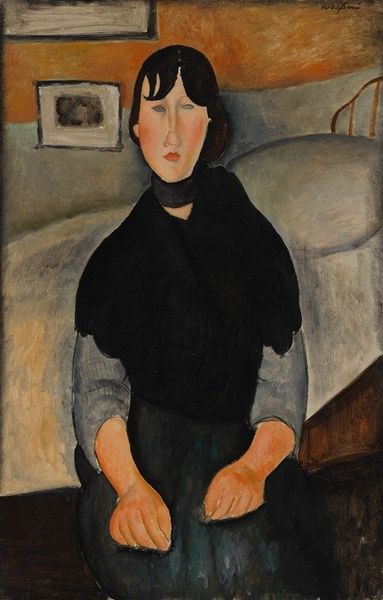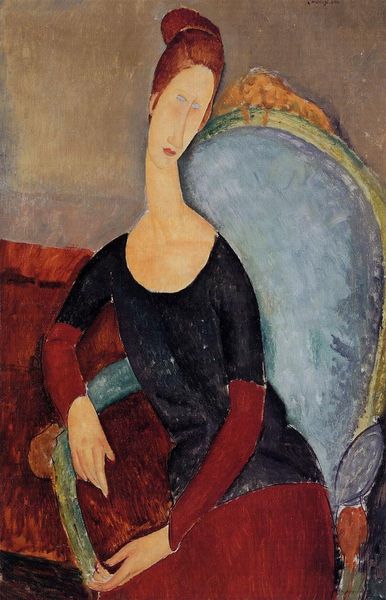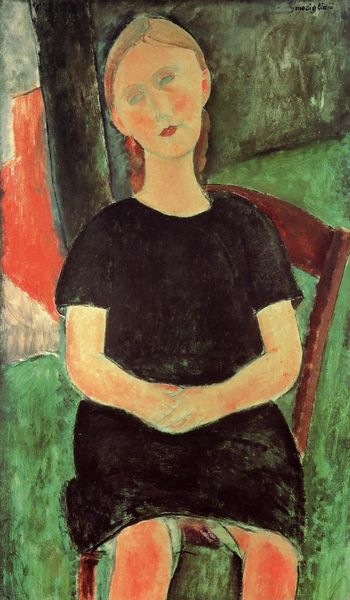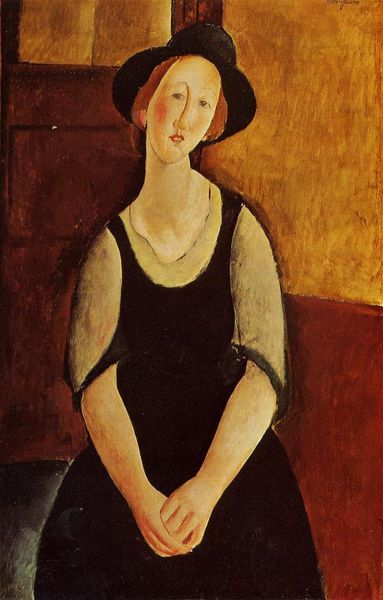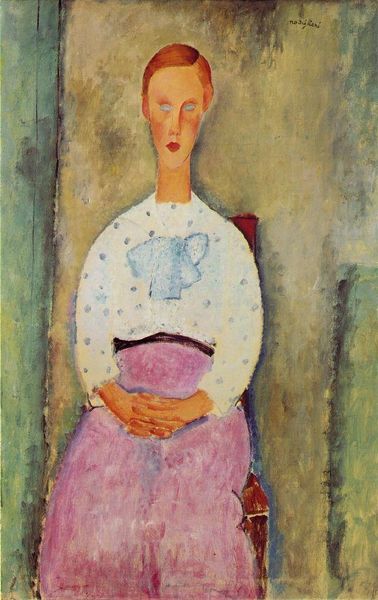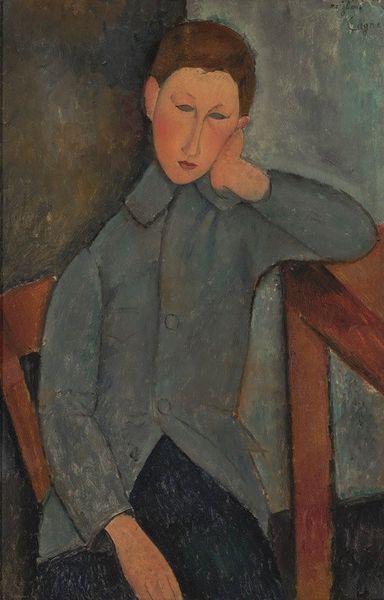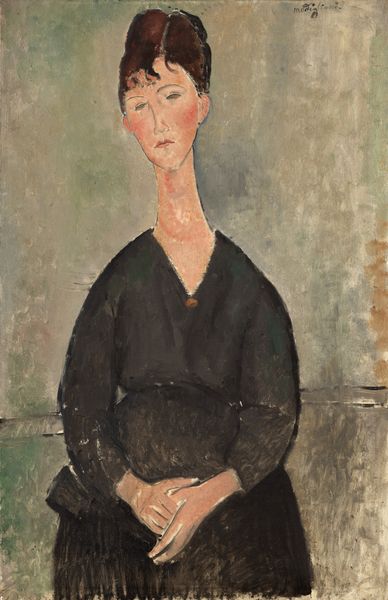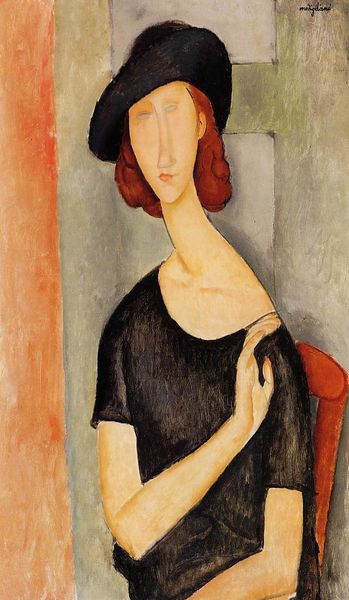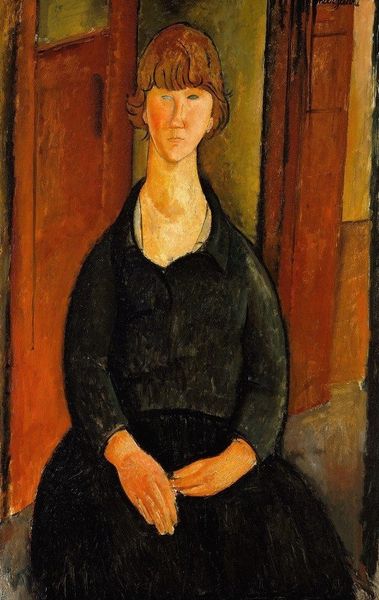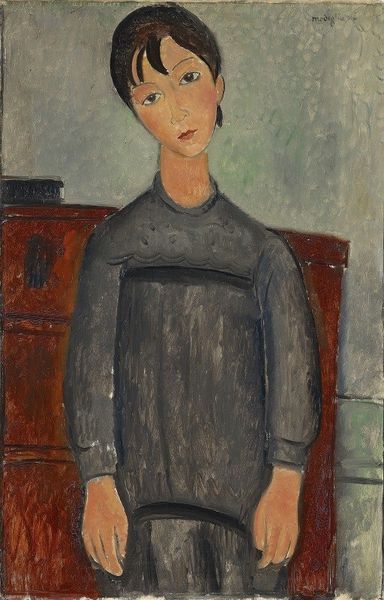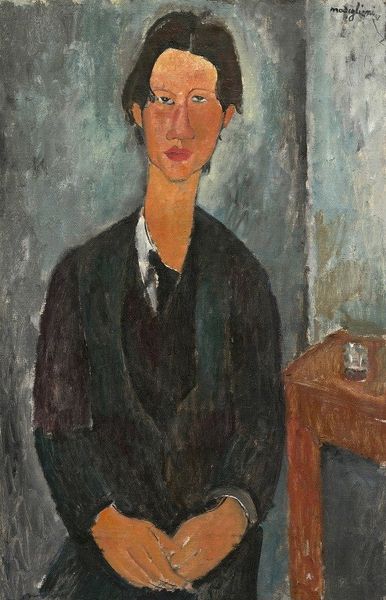
Seated Woman with Child (Motherhood) 1919
0:00
0:00
amedeomodigliani
Lille Métropole Museum of Modern, Contemporary and Outsider Art (LaM), Lille, France
painting, oil-paint
#
portrait
#
painting
#
oil-paint
#
oil painting
#
child
#
group-portraits
#
expressionism
#
italian-renaissance
#
portrait art
#
modernism
Dimensions: 130 x 81 cm
Copyright: Public domain
Curator: Well, I’m immediately struck by the melancholy stillness. The color palette feels muted, yet somehow warm. Editor: Today, we are looking at Amedeo Modigliani’s oil on canvas, "Seated Woman with Child (Motherhood)" from 1919, housed here at the Lille Métropole Museum of Modern, Contemporary and Outsider Art. Curator: Right, there's a fascinating tension, isn’t there? This elongated, almost sculptural treatment of the figures set against a backdrop of flattened space, is very classic Modigliani. But the eyes! The eyes, seemingly without pupils, invite projection, prompting all sorts of stories. Editor: Absolutely. It's a deliberate formal choice. The almond-shaped faces, the simplified forms, everything points towards his unique take on Italian Renaissance ideals filtered through a modernist lens. One could argue that the eyes, devoid of direct gaze, actually universalize the figures. Curator: Perhaps. Or maybe it is that these blank gazes intensify the feeling of introspection. Like these figures are in a private world. See how the strong verticals create a sense of monumentality, and, I think, a kind of stoicism that comes out to meet the soft, warm skin tones, especially between mother and child? The contrast is heart-wrenching. Editor: Observe, though, how the composition emphasizes verticality, thereby elongating the figures into these elegant forms. But at the same time the simplification of shapes introduces ambiguity, leaving us with almost geometric fields of colour instead of clear depiction. This abstraction directs us toward deeper structural explorations and theoretical understanding. Curator: The muted tones really contribute to its subtle, complex emotional atmosphere. The painting is less about observed reality and more about a carefully constructed mood. I imagine he was accessing and perhaps representing an eternal experience of motherly connection in some way. Editor: Yes, the ambiguity is powerful! As our visit ends, I feel challenged to let the shapes communicate feeling as much as realistic figures do. Curator: For me it really is a tender portrayal of a bond—simplified and melancholic and profoundly moving. A world of sentimentality within these carefully orchestrated shapes and colours.
Comments
No comments
Be the first to comment and join the conversation on the ultimate creative platform.
